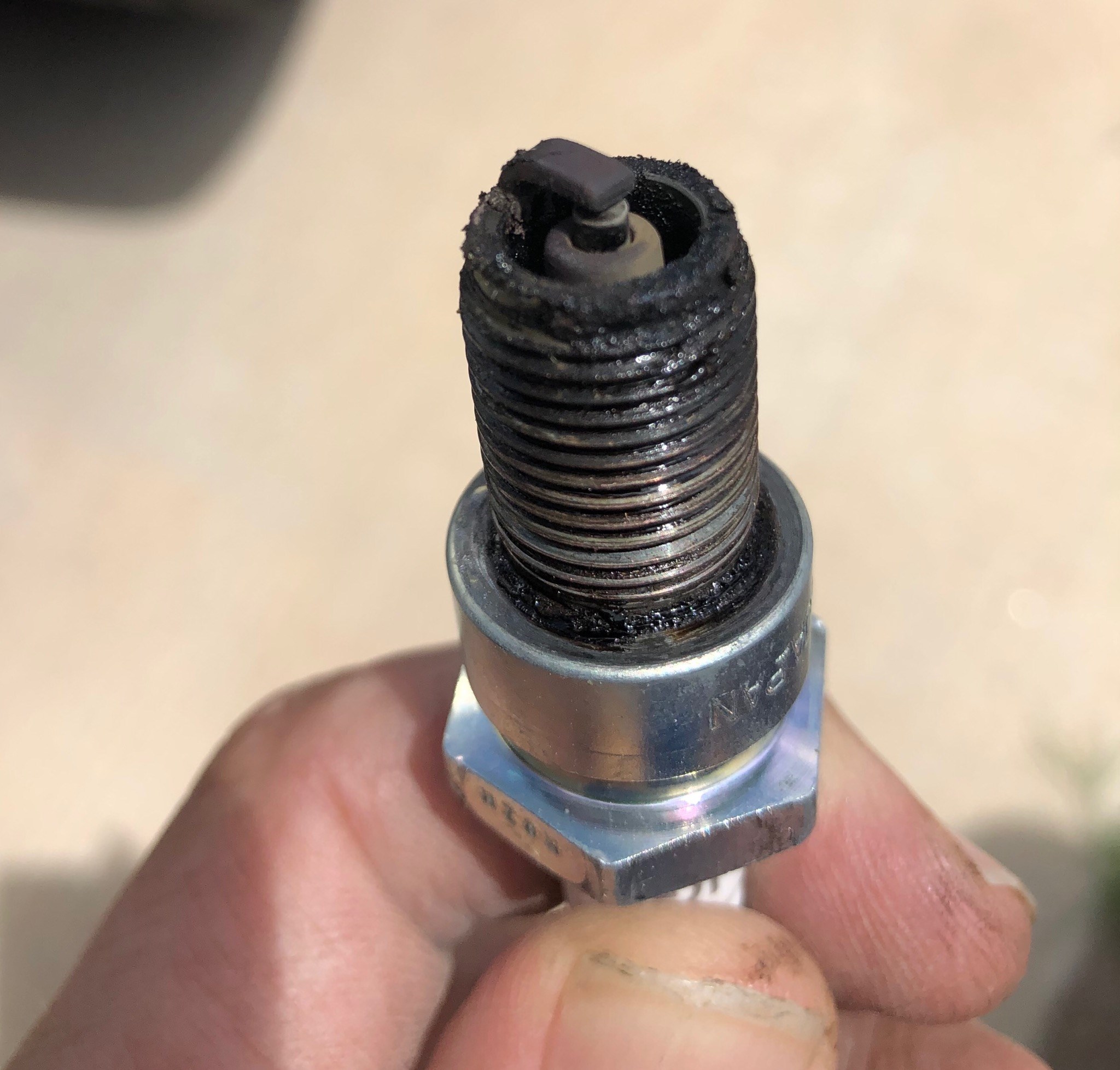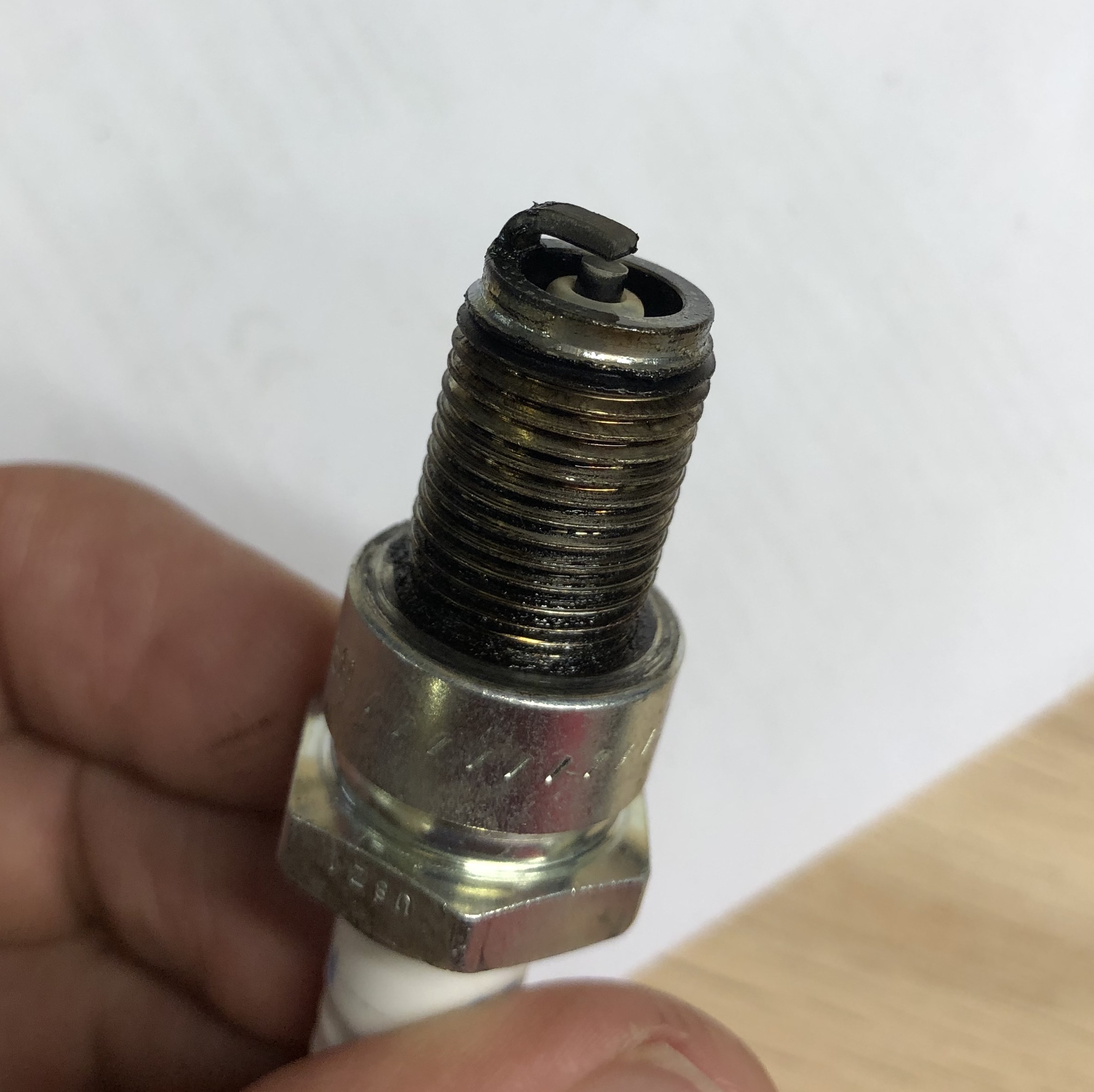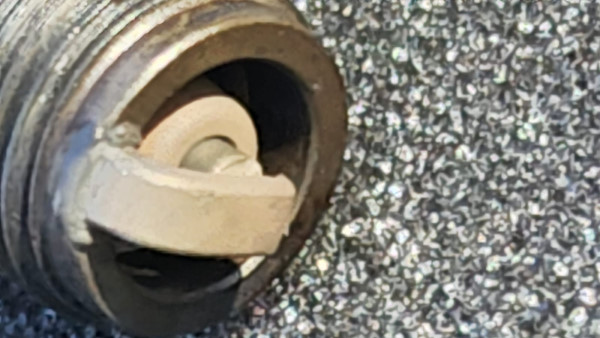Spark plug reading for paramotors
by Had Robinson
updated January 25, 2023
The condition of the spark plug tells a lot about how an engine is performing. Reading spark plugs from carbureted 2 stroke engines is much more informative than reading plugs from fuel injected automobile engines. This is because the fuel mixture in carbureted engines is, basically, all over the place. In addition, ultralight engines are exempt from U.S. E.P.A. and E.U. emission restrictions so our engines can be tuned broadly, even to extremes.
Pilots are always welcome to send high resolution photos of spark plugs to our contact email address. I will take a look at them and give my opinion.
In addition to the photos below, Champion has this excellent page with photos and explanation on reading spark plugs. The page, however, is mostly about the extremes of what happens to plugs in water-cooled automobile engines. Below I have posted actual photos from 2 stroke paramotors that may be studied.
Engines running non-leaded fuels require less maintenance. A bonus is that pollution is lower. A plug that is too cold will be covered with black (unburned fuel) deposits and the engine may be hard to start and not reach full horsepower. Most paramotor manufacturers specify spark plugs for hot and cold running environments and it is important to have the correct one. Generally, if the air temperature is usually over 80F (27C) use a cooler running spark plug.
Engines that use ethanol blends will not last as long and why any other kind of fuel is preferable. Regardless of what kind of fuel is used, all spark plugs will wear out and/or foul. It is so inexpensive to change out the spark plug and improve starting and high end performance and is why it should always be done on a regular basis.
How to read a 2 stroke spark plug
- Launch and fly the engine that you are testing.
- Set up to land in some convenient place.
- Run the engine at full throttle for about 3 minutes i.e. climb out.
- Immediately stop the engine with the kill switch (do NOT use the choke) and land.
- Remove the spark plug and examine it. Take a photo if you can and store it for comparisons later.
Examples
A. Correct engine running temperature
Here is an example of a spark plug from an engine that was running at the right temperature. The insulator is a light brown/cappuccino. The ground electrode indicates that the engine is running a slight bit on the lean side. The threaded metal part of the plug is a dark chocolate. Note: there will always be a small amount of burned oil around the base of the plug. If the oil extends beyond the base, the plug probably has not been torqued down properly and is leaking.
Here is another healthy spark plug from an engine running non-leaded gasoline. It is slightly on the "cold" side. That is, the engine was running slightly more rich than it needed to be. This is better than running too lean. There is a small amount of harmless fouling.
B. Rich running conditions
This spark plug is fouled from an engine that is running rich. The pilot of this engine used Amsoil's Dominator so there should be no issue with the oil burning at too low a temperature (and forming "cake", a potentially harmful deposit that can cause piston ring sticking). Also, note the black gunk at the base of the plug. It is likely that the plug was not torqued down properly and was leaking. When replacing a spark plug it is important to chase the hole with the special tool which will remove cake from the threads. Failure to do this will prevent the spark plug from being torqued to the correct value.

Here is a new plug, same engine as above, but the pilot closed the adjustable high speed jet 1/8th turn. Head temperature increased some but the plug is not fouled.

C. Fouled from using leaded fuel
The spark plug below is from an AVGAS burning engine. Note that lead monoxide is present close to the grounded electrode and absent from the cooler parts of the plug. The problem of using AVGAS in paramotors is that the lead deposits can also foul the lands on the piston resulting in ring sticking. This is less of a problem when operating at high altitudes (>4,000' MSL) but can be severe at sea level and in hotter climates. The addition of fuel additives e.g. TCP can lessen the problem but does not eliminate it.
D. Running lean
The pilot who sent this photo in had trouble with burning holes in the top of the piston. Running an engine this hot will not only damage the piston but the cylinder wall, as well.
Another plug from an engine running lean but not as lean as the one above.
This spark plug was from an engine burning AVGAS. There are less lead deposits because the engine was running a bit lean and the deposits tended to burn away.
This spark plug came from an engine that had the right fuel mixture (it was not running to rich or lean) but the spark plug had the incorrect heat range. Notice that the metal body of the spark plug has a light soot coating. Rather than being a light gray or metallic color, the grounding electrode is a dark brown/coffee color. On the other hand, the center electrode is almost solid white at the end. A hot plug can cause pre-ignition which can seriously damage the engine.
Additional notes
This detailed article by Mike Canter and the photos of this one are more about automotive spark plugs but much applies to small engines.
Pilots should not change their spark plug type from the manufacturer's specification unless there is a clear and understandable reason to do so e.g. the plug is getting too hot (need a cooler plug) or fouls easily (needs a hotter plug). The quality of the fuel and the general environment where the engine is run (hot & humid or cold & dry) can help determine whether the plug should be hotter or colder.
Remember: The gap must be correct for the plug to do its job. If your engine sputters/stalls/cuts-out at full throttle, it may be a faulty spark plug, a failed secondary wire, or a lack of fuel.
![]()





